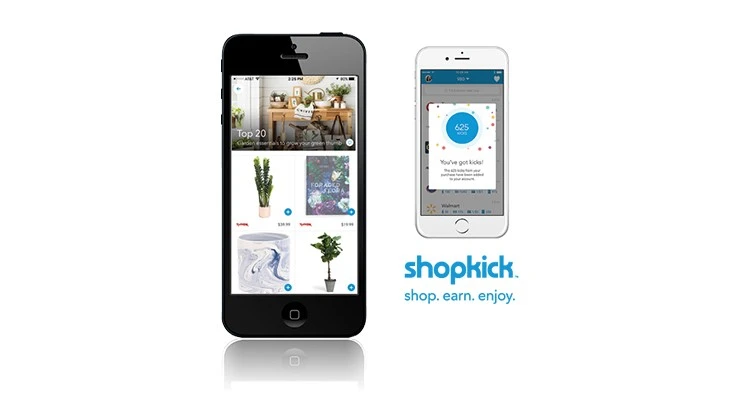
LOGO COURTESY OF SHOPKICK ; PHONE: DREAMSTIME.COM

In an age when consumers can get anything they want
Garden centers
Several mobile apps have surfaced in recent years designed around this goal. One of them is Shopkick, an app that gives retailers the ability to reward their customers for purchases without cutting their prices. Once the app is installed, users earn “kicks,” similar to frequent flier miles or loyalty points, for walking into the store, scanning featured products, making purchases or uploading receipts from partner companies. The kicks can be redeemed for a wide variety of rewards, from gift cards to electronics and more.
Bill Demas, CEO of Shopkick, says the app was founded in 2010 with the intention of driving more people into stores. Being able to physically hold a product before purchase is a major strength of brick-and-mortar retailers, Demas says. Simply advertising a product leaves a slim chance of purchase, but increasing foot traffic and hands-on engagement with the products
“With many billions of dollars spent in advertising, you’re lucky if you get a .3 percent chance of an ad impression converting into a sale,” Demas says. “In our case, depending on category, when you hold a product, that’s anything from 5 to 20 percent.”

Shopkick also hosts branded content, such as video advertisements, that customers can interact with to earn extra kicks. Demas adds that client companies only pay for Shopkick when customers use the system.
“It’s a pay for performance model, so we’re only paid when the person goes in the store, scans the product, uploads the receipt or interacts with the content,” he says. “If the action is not completed, we aren’t paid.”
Although Demas says the Shopkick model does not currently fit with independent garden centers and other smaller, specialty retailers, implementing a scaled-down “self-serve” option is among Shopkick’s long-term goals.
“Gardening and do-it-yourself is another [area] that we’re exploring closely because it has the same dynamic of an appeal to being in the store in many cases, versus buying online,” Demas says. “For the independent garden center, it would be more challenging to make our model work because we work well on a national level.”
The dynamic between online and physical retail is complex and ever-changing, but Demas believes businesses across the country are learning that encouraging customer engagement and creating unique shopping experiences is crucial to surviving as a brand.
“There are multiple factors involved, but clearly, online [shopping] and being able to get almost instant gratification with certain products is obviously a very fast-growing part of the market,” Demas says. “The [brands] we’ve talked to have realized that if you’re in

Explore the May 2017 Issue
Check out more from this issue and find your next story to read.
Latest from Garden Center
- Meet the Next Gen: Gabriella Blair, Star Roses and Plants
- Leading Women of Horticulture: Katie Dubow, Garden Media Group, and Aubry Field, Lizzy Blossom
- Boxed in: 2025 Axiom Gardening Outlook Study explores big box vs IGCs
- Rhododendron renaissance: Holden Forests & Gardens using research to improve commercial plants
- Showing up at your horticulture business as your whole self
- Ask HR: We got a bad review after an employee having a bad day snapped at a customer. What do I do?
- University of Florida researchers are securing the future of floral fragrance using caladium
- Leading women of Greenhouse Management





